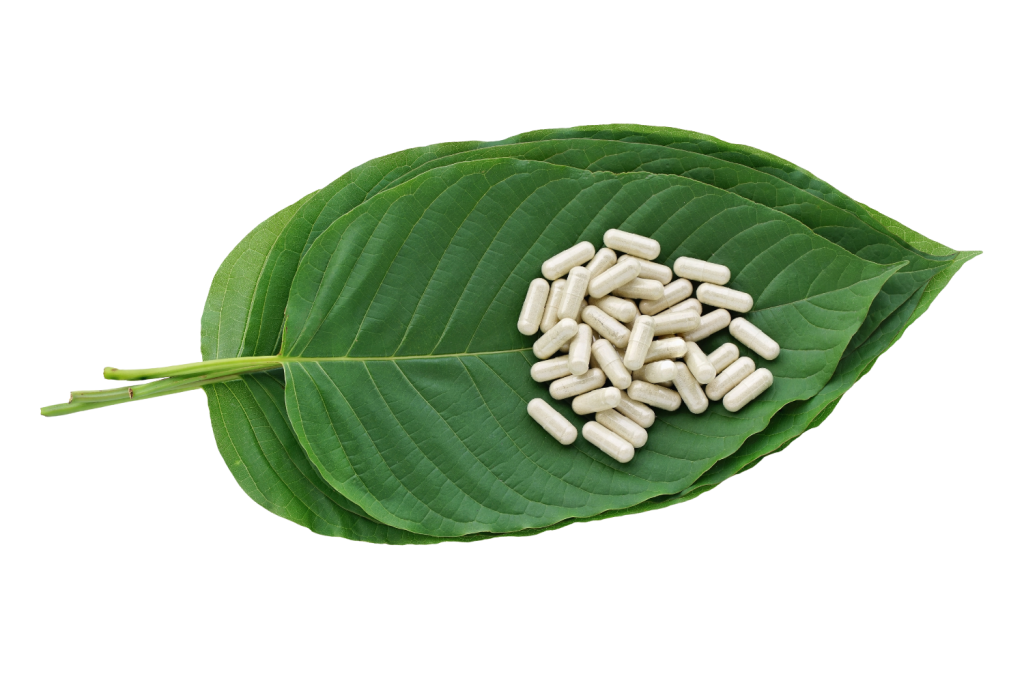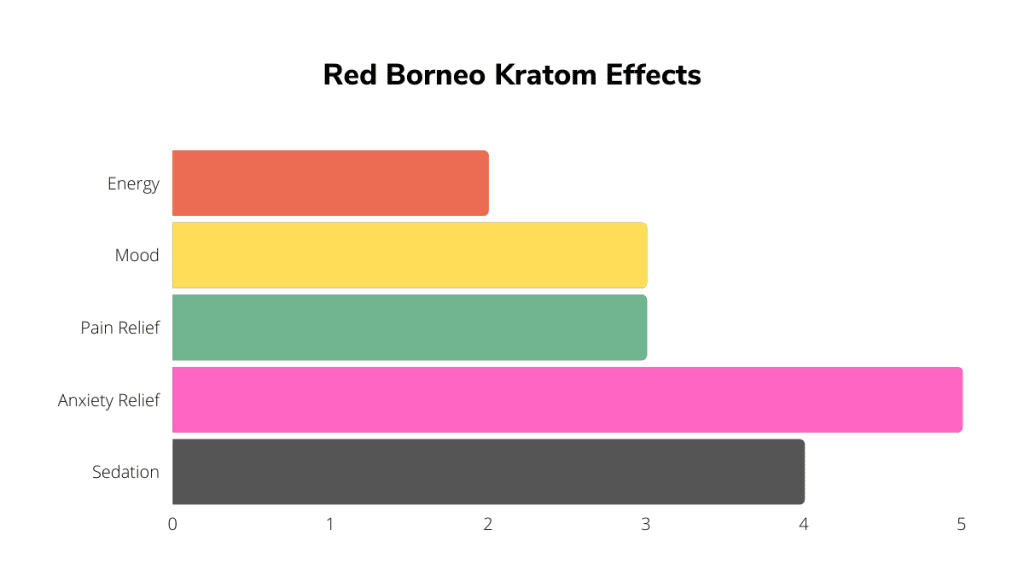What Is Kratom?
Kratom (Mitragyna speciosa) is a Southeast Asian herb with powerful analgesic properties. It’s often used in traditional Thai and Indonesian medicine to relieve pain from chronic conditions like arthritis. Most people use kratom by dissolving dried, crushed leaves in water, although it is also possible to take kratom via tincture.
There are three main strains of kratom: red, green, and white, each named after the color of the veins in their leaves. Red kratom strains are the most commonly used for pain relief due to their high alkaloid concentrations.
Can Kratom Help With Arthritis?
Kratom can help with arthritis. Many people use kratom to make their arthritis more manageable. Treating arthritis can be challenging, as some people don’t respond to standard treatments, requiring them to search for alternative methods of dulling their pain.
Kratom works by blocking pain signals before they can be transmitted to the brain, meaning it is effective against all kinds of pain [1]. It works by binding to opioid receptors, reducing the body’s ability to communicate pain responses rather than treating the underlying causes of pain. This is especially helpful for treating arthritis since it’s often difficult or impossible to treat the root cause.
It’s important to note that kratom is not an opioid, even though it interacts with the body’s opioid receptors. Kratom contains two dominant alkaloids responsible for the bulk of its pain-relieving effects: mitragynine and 7-hydroxymitragynine. Of the two, 7-hydroxymitragynine is the more potent analgesic, so red strains with high concentrations of this alkaloid are thought to be better for treating arthritis.
Kratom also helps people relax, which can further reduce arthritic pain. People who have arthritis often clench their joints, subconsciously attempting to ease their pain by not moving, and this usually has the opposite effect, exacerbating pain rather than alleviating it. Kratom may be able to help some people relax, relieving tension and taking pressure off of sore joints.
Kratom, Dopamine, & Arthritis
Kratom provides direct pain relief through opioid receptor binding, but it also may influence pain perception by regulating levels of neurotransmitters like dopamine [2]. Hollywood has created an image of dopamine as a pleasure chemical, which isn’t entirely inaccurate but is misleading. Neuroscientists prefer to describe dopamine as a motivation chemical since it controls how we react to external stimuli.
Dopamine plays a crucial role in conditioning our responses to pain and pleasure, influencing how quickly we learn to avoid painful behaviors and seek pleasurable ones. Kratom can help people live with painful conditions like arthritis by changing how they respond to actions that cause pain by regulating dopamines levels.
Even though it sounds like altering dopamine levels is a parlor trick rather than an actual method for reducing pain, controlling pain by reducing our sensitivity to it is an essential part of living with pain. Managing pain by tweaking dopamine levels may produce dramatic shifts in what people with chronic pain feel comfortable doing.
Kratom, Serotonin, & Arthritis
Dopamine isn’t the only neurotransmitter that kratom interacts with; it can also cause increased serotonin absorption [3]. Serotonin is essential for cognitive health, memory, mood, and learning, and higher levels are associated with feelings of well-being and euphoria.
Serotonin plays an indirect part in the body’s pain processing system, similar to dopamine. Kratom’s effect on serotonin absorption could help reduce the mental toll that living with constant pain takes. Depression and anxiety are extremely common among people with arthritis, and treatments often overlook this aspect of the condition. Kratom may help improve a patients’ mental state, making it easier to tolerate overall.

Best Kratom Strains for Relieving Arthritis
All kratom is stimulating at low doses and sedating at higher doses, so all strains offer some pain relief. However, red strains are much better pain-relievers thanks to their higher concentrations of 7-hydroxymitragynine.
It can be challenging to find specific information about a strains’ 7-hydroxymitragynine, but reputable kratom companies publish lab testing reports on their website that sometimes contain information about alkaloid concentrations. If you find a vendor that provides this information, look for strains with higher 7-hydroxymitragynine content, as these will be better for easing arthritis pain.
If you can’t find information about alkaloid content or prefer not to spend too much time digging for it, here are some common red strains that experienced users say are excellent for arthritis.
1. Red Bali
Red Bali is a great strain for pain relief. It’s a balanced strain, meaning it is less likely to cause side effects than some strains, which makes it a great choice for beginners, according to experienced users. It’s not as potent as some red strains, but many people say it’s more than strong enough to alleviate mild to moderate pain.

2. Red Maeng Da
If Red Bali doesn’t sound powerful enough for your needs, most users will recommend Red Maeng Da. It’s considerably more potent than Red Bali and has a reputation for being an extremely sedating strain. Most users say it’s a top pick for pain relief, although it also comes with a higher chance of causing side effects.

3. Red Borneo
Red Borneo is a step back from Red Maeng Da in terms of strength but is slightly stronger than Red Bali. Different strains affect people differently, so most people say it’s worth trying Red Borneo even if you don’t have success with Red Bali. Red Borneo is said to be especially good for relaxing, which can be especially helpful for people with stiffness.

Risks of Using Kratom for Arthritis Relief
Many people use kratom as an alternative to dangerous pain relievers, but that doesn’t mean it doesn’t come with its fair share of risks.
The most common side effects of using kratom for arthritis relief are nausea, lethargy, confusion, memory impairment, dizziness, diarrhea, and constipation.
Higher doses come with a higher risk of side effects, so experts recommend starting slowly before ramping up your dose.
The most significant risk of kratom use is addiction. Even though kratom is not an opioid, it has a similar potential for causing dependence. Experts recommend limiting your weekly intake to 4-5 days and taking one week off for every one to two months of regular kratom use. Extreme tiredness that lasts for several days may indicate that your body needs a break and is an indication that you need to control your intake.
Is It Safe to Take Kratom With Other Pain Medication?
Combining any drugs can be dangerous, but this is especially true with kratom and pain medication. Mixing medications can cause harmful reactions that may have lasting effects on your health and cause death in extreme cases. You should always consult a physician before taking any new drug or medication.
Kratom interacts with many drugs, but using it with pain relievers — especially opioids — can be deadly.
Kratom vs. Plaquenil for Arthritis
Plaquenil is a disease-modifying antirheumatic drug (DMARD) used to treat general inflammation. It’s commonly used to treat rheumatoid arthritis, an autoimmune disease that causes damage to joints causing pain and swelling. Plaquenil is only used to treat rheumatoid arthritis, not other common forms of arthritis, like osteoarthritis or psoriatic arthritis. Plaquenil is also sometimes used to treat malaria.
Kratom and Plaquenil treat arthritis through entirely different mechanisms. Plaquenil treats the cause of rheumatoid arthritis, while kratom merely masks the symptoms. Kratom is often used to treat generic pain, making it less specific than Plaquenil for treating rheumatoid arthritis. Plaquenil is considered less addictive than kratom, but the list of side effects of Plaquenil is longer than the list for kratom. Additionally, Plaquenil is not recommended for use by people with heart conditions as it can lead to complications.
Comparing Plaquenil & Kratom:
| 🍃 kratom | 💊 Plaquenil | |
| Availability | Unrestricted | Prescription-Only |
| Natural or Synthetic? | Natural | Synthetic |
| Active Ingredient | Mitragynine, 7-hydroxy-mitragynine, & other plant-derived alkaloids | Hydroxychloroquine |
| Indications | Boost energy & focus, chronic pain, opiate withdrawal, anxiety, & sleep | Rheumatoid arthritis, inflammation, malaria |
| Dosage | 2-12 grams per day | 400-600 mg per day |
| Common Side Effects | Nausea, vomiting, lethargy, dizziness, anxiety, brain fog, constipation | Difficulty focusing your eyes, dizziness, nausea, chills, sore throat, weak pulse, headaches |
| Level of Risk | Low-Moderate | High |
| Risk of Addiction | Moderate | Low |
| Cost | $10 – $20 an ounce (~30 grams) | $650-$700 for sixty 200 mg capsules |
Kratom vs. Vicoprofen for Arthritis
Vicoprofen is a common pain reliever over the counter, with stronger versions available by prescription. The active ingredient in Vicoprofen is ibuprofen, a common non-steroidal anti-inflammatory drug (NSAID) found in Advil and Motrin. Kratom and NSAIDs are generally safe to use together but always check with your doctor first.
Vicoprofen and other NSAIDs are better at treating some forms of arthritis because they’re anti-inflammatory. Kratom does not have anti-inflammatory properties but is considered a more potent pain reliever, making it somewhat difficult to compare its effectiveness with Vicoprofen. Both kratom and Vicoprofen have similar side effects, but Vicoprofen is generally considered significantly more addicting.
Comparing Vicoprofen & Kratom:
| 🍃 kratom | 💊 Vicoprofen | |
| Availability | Unrestricted | Prescription-Only |
| Natural or Synthetic? | Natural | Synthetic |
| Active Ingredient | Mitragynine, 7-hydroxy-mitragynine, & other plant-derived alkaloids | Ibuprofen |
| Indications | Boost energy & focus, chronic pain, opiate withdrawal, anxiety, & sleep | Inflammation, pain, fever |
| Dosage | 2-12 grams per day | 5-15 mg per day |
| Common Side Effects | Nausea, vomiting, lethargy, dizziness, anxiety, brain fog, constipation | Stomach irritation, ulcers, impaired kidney function, wearing of the intestinal lining, stomach bleeding |
| Level of Risk | Low-Moderate | High |
| Risk of Addiction | Moderate | High |
| Cost | $10 – $20 an ounce (~30 grams) | $550-$650 for 120 7.5 mg capsules |
Kratom vs. Voltaren for Arthritis
Voltaren is a topical gel used to treat rheumatoid arthritis and osteoarthritis. Experts believe that it has a lower chance of causing side effects and less potential for addiction since it’s applied to the skin rather than taken orally. However, its side effects are troubling, especially for people with high blood pressure or heart problems.
Kratom and Voltaren are similarly effective in reducing pain from arthritis, although they function through distinct channels. Voltaren is an NSAID, so it reduces inflammation, while kratom blocks pain signals. Experts consider Voltaren a better treatment for arthritis than kratom since it treats inflammation directly.
Comparing Voltaren & Kratom:
| 🍃 Kratom | 💊 Voltaren | |
| Availability | Unrestricted | Prescription-Only |
| Natural or Synthetic? | Natural | Synthetic |
| Active Ingredient | Mitragynine, 7-hydroxy-mitragynine, & other plant-derived alkaloids | Diclofenac sodium |
| Indications | Boost energy & focus, chronic pain, opiate withdrawal, anxiety, & sleep | Rheumatoid arthritis, osteoarthritis, ankylosing spondylitis |
| Dosage | 2-12 grams per day | 100-200 mg per day |
| Common Side Effects | Nausea, vomiting, lethargy, dizziness, anxiety, brain fog, constipation | Cardiovascular thrombosis, gastrointestinal bleeding, high blood pressure, heart failure, rash, hepatoxicity, nausea, dizziness |
| Level of Risk | Low-Moderate | Moderate-High |
| Risk of Addiction | Moderate | Low |
| Cost | $10 – $20 an ounce (~30 grams) | $60-$70 for 100 grams of 1% gel |
How Common is Arthritis?
Arthritis is incredibly common, with an estimated 24% of adults in the United States suffering from some type of arthritis. Osteoarthritis is the most common form and is something that develops with age. Natural aging, injuries, and general wear and tear can all lead to osteoarthritis in major joints like the hips, knees, and shoulders.
Despite being a stereotypically elderly problem, arthritis is the primary cause of work disability, with more than half of people with arthritis falling between the ages of 18 and 64.
Signs & Symptoms of Arthritis
The most common symptoms of arthritis are joint pain, stiffness, and decreased range of motion. Some people experience swelling and redness, although these are somewhat less common.
Sometimes it can be hard to tell if certain kinds of joint pain are caused by arthritis or a different condition. Arthritis can be hereditary, making it more likely to cause joint pain if your parents or other close family members have it. Women are also more likely to develop arthritis — specifically rheumatoid arthritis — than men. Older people and people with a history of joint injuries are also more likely to have arthritis.
If you’re unsure whether your joint pain and discomfort are caused by arthritis, consult a doctor. Arthritis can seem frightening and debilitating when left untreated but is a manageable condition for most people.
Common Treatments for Arthritis
Besides kratom, Plaquenil, Vicoprofen, and Voltaren, there are several other standard treatments for arthritis. The most obvious are over-the-counter pain relievers like Tylenol, Advil, and Aleve. These medications are less potent than the prescription medications covered earlier, so they’re more suitable for mild to moderate arthritis pain.
Focused exercise programs from a trained physical therapist can also help some people with arthritis by increasing their range of motion and strengthening the supporting muscles around the painful joint. People who don’t respond to medication or physical therapy sometimes resort to surgery. Joint repairs and replacements can help when the pain interferes with living a normal life.

Key Takeaways: Can Kratom Help With Arthritis?
Kratom is a natural herb that is often used for pain relief due to its opioid-like activity in the body. It can be a valuable tool for combatting arthritis in people who find other forms of treatment lacking. However, kratom is not an anti-inflammatory, which makes its use intended to relieve the symptoms of arthritis, not address the underlying causes.
NSAIDs and other pain relievers are often used to treat arthritis with varying degrees of success. Pain relievers and anti-inflammatories usually come with substantial risks and may not suit everyone. Kratom can offer an alternative to these medications for people who can’t take them due to preexisting conditions, although it has side effects that need to be managed.
The bottom line is that kratom has the potential to help reduce the pain associated with arthritis and help people maintain their activity level. Still, it should not be considered a risk-free alternative to the usual arthritis treatments. Kratom should never be combined with other pain medications or drugs due to the possibility of dangerous interactions.
- Eastlack, S. C., Cornett, E. M., & Kaye, A. D. (2020). Kratom—Pharmacology, clinical implications, and outlook: a comprehensive review. Pain and therapy, 9(1), 55-69.
- Stolt, A. C., Schröder, H., Neurath, H., Grecksch, G., Höllt, V., Meyer, M. R., … & Becker, A. (2014). Behavioral and neurochemical characterization of kratom (Mitragyna speciosa) extract. Psychopharmacology, 231(1), 13-25.
- Johnson, L. E., Balyan, L., Magdalany, A., Saeed, F., Salinas, R., Wallace, S., … & Grundmann, O. (2020). Focus: Plant-based Medicine and Pharmacology: The Potential for Kratom as an Antidepressant and Antipsychotic. The Yale Journal of Biology and Medicine, 93(2), 283.









